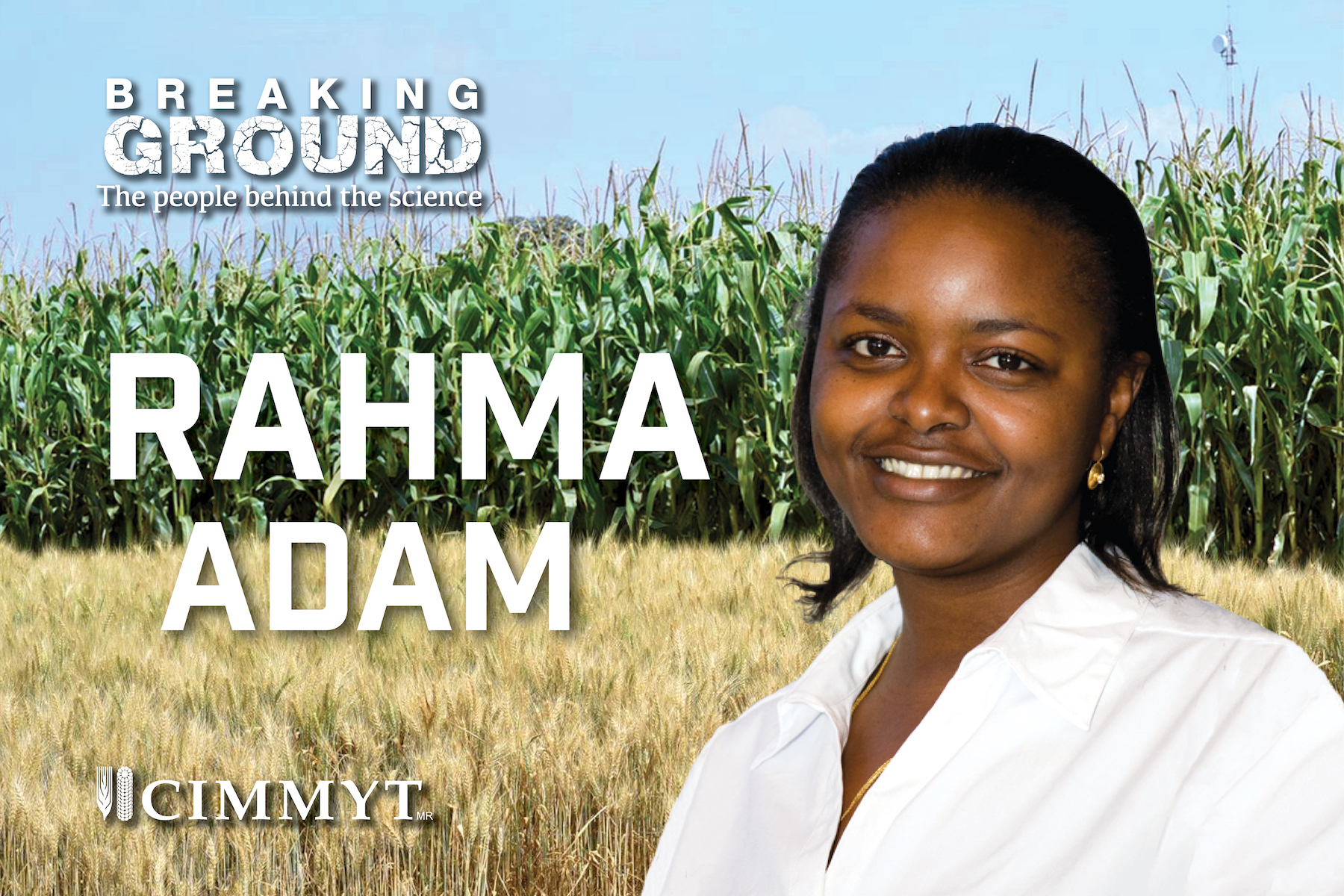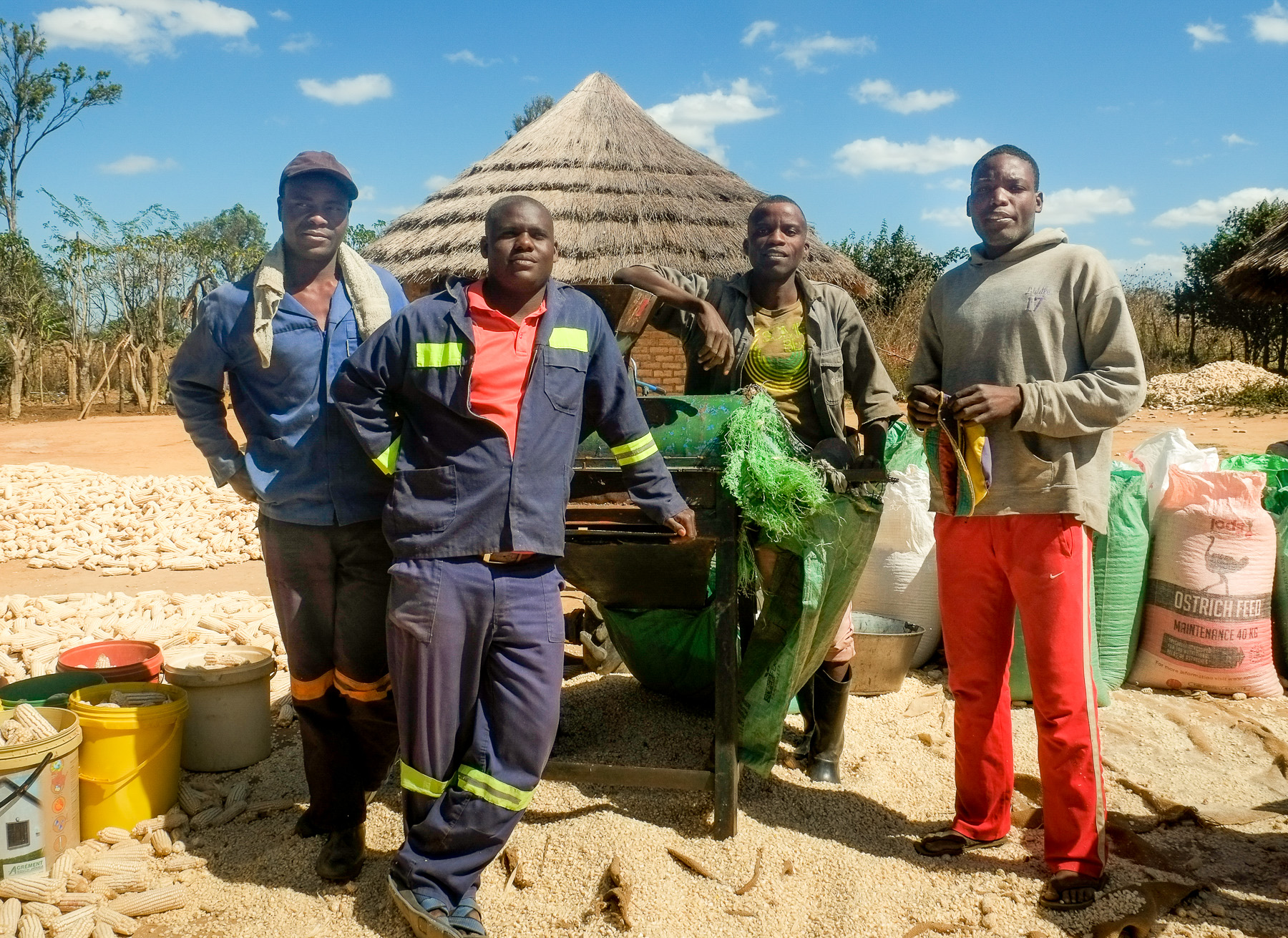
The sound of an engine roars as Gift Chawara, a 28-year-old from rural Zimbabwe, carefully removes a mesh bag bulging with maize grain hooked to his mechanized sheller. Fed with dried maize cobs, the sheller separates the grain from the shaft before shooting the kernels out the side into the awaiting bag. Chawara swiftly replaces the full bag with an empty one as the kernels continue to spill out.
It is eleven in the morning and the sun beats down over the small farm. Chawara and his friends have only been working a few hours and have already shelled 7 tons for their neighbor and customer Loveness Karimuno; thirteen more tons to go.
The widowed farmer watches as the bags of grain line up, ready for her to take to market. It used to take Karimuno two to three weeks to shell her maize harvest by hand, even with the help of hired labor. This grueling task saw her rub each maize ear on a rough surface to remove the grain from the shaft. Now, these young men and their mechanized sheller will do it in just a few hours for a small fee.
“When my neighbor told me the boys were shelling small amounts of maize at reasonable prices, I got in contact with them,” said Karimuno. “It’s cheaper than hiring people to help me do it manually and the speed means I can sell it faster.”
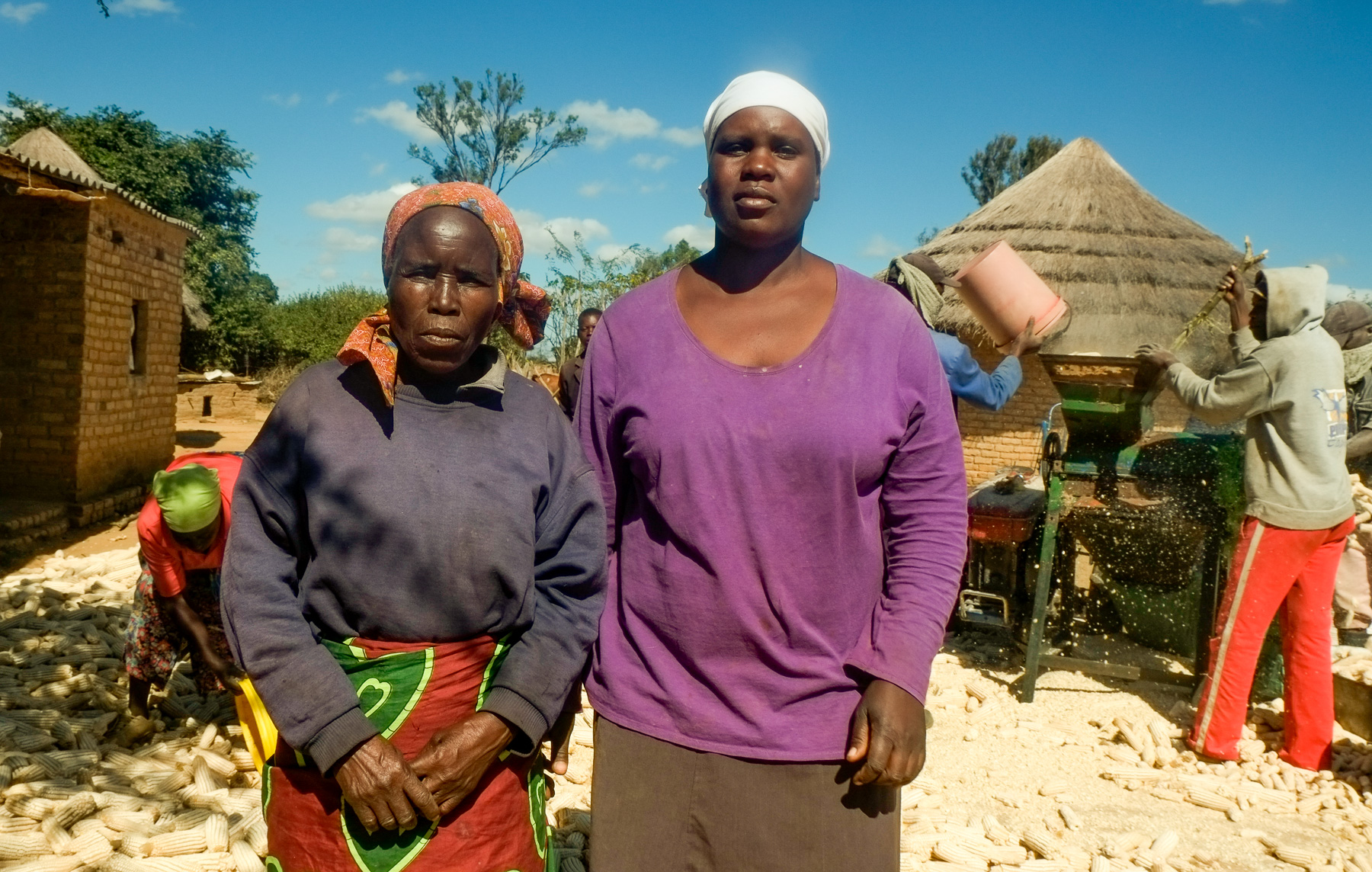
The group of young entrepreneurs is serving almost 150 family farms around the village of Mwanga, located about two hours northwest of the capital Harare. They offer services such as shelling and planting, powered by special machinery. Since Chawara and his partners started the business three years ago, word has spread and now they are struggling to keep up with demand, he expressed.
Mechanized agricultural services have traditionally only been used by large-scale farmers who could afford the high prices, but small and medium-sized machines are fast becoming affordable options for family farmers through the advent of service providers, explained Frédéric Baudron, an agronomist with the International Maize and Wheat Improvement Center (CIMMYT).
The five young men are among the increasing number of youth across eastern and southern Africa creating a stable living as entrepreneurs in agricultural mechanization service provision, Baudron said.
Tired of the lack of profitable work in their rural community, the group of youths jumped on the opportunity to join a training on agricultural mechanization, run by CIMMYT. They heard about this training through local extension workers.
“We would probably be out of work if we hadn’t had the opportunity to learn how agricultural mechanization can be used to help smallholder farmers and gain skills to run our own business to provide these services,” Chawara expressed as he took a quick rest from shelling under a tree.
“It has really changed our lives. Last season we shelled over 300 tons of maize making just under US $7,000,” he said. “It has gone a long way in helping us support our families and invest back into our business.”
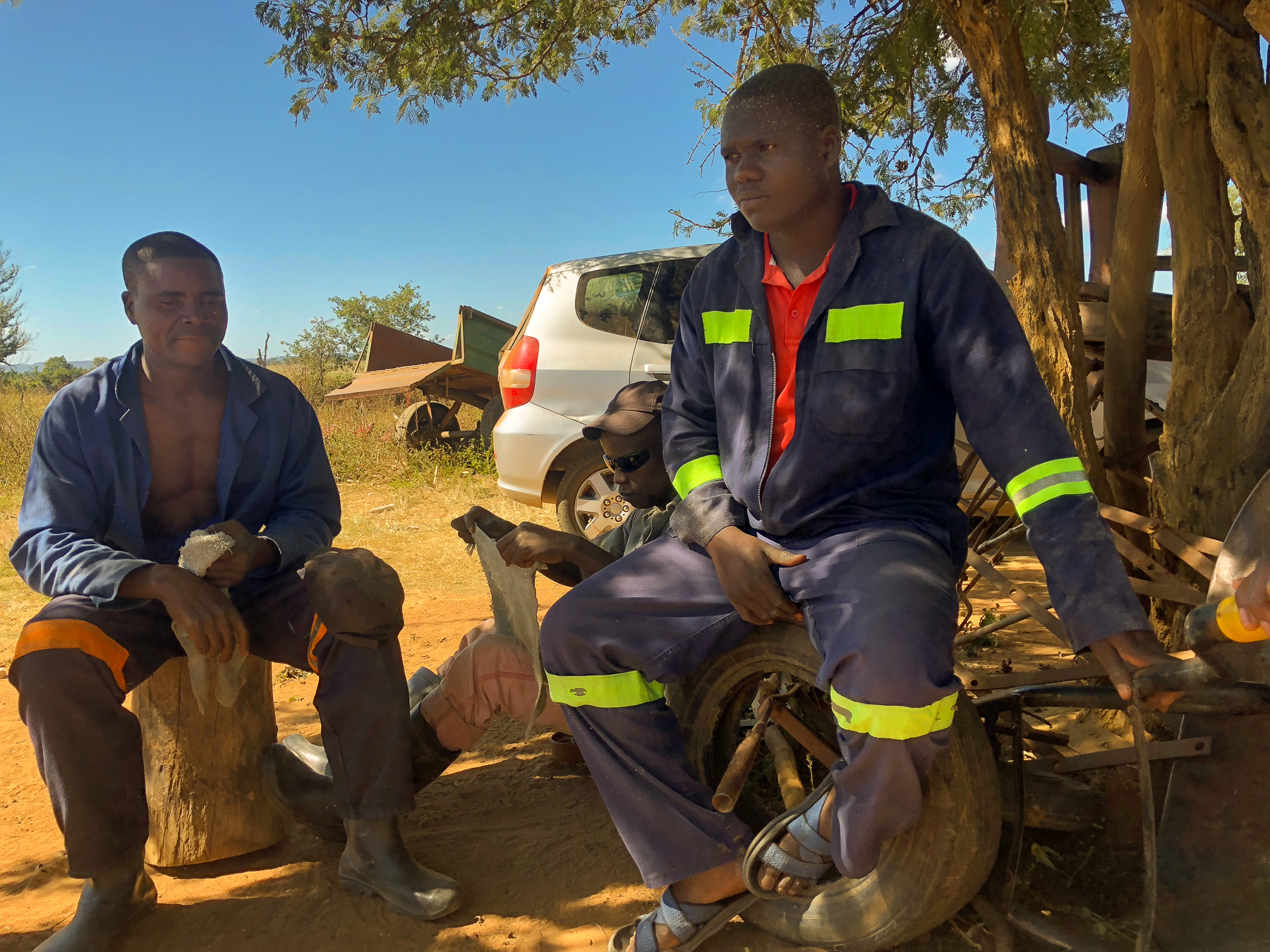
Mechanization as a way out of poverty
Sub-Saharan African youth struggle with high unemployment and working poverty. Agriculture is perceived as a sector that can absorb much of the rising level of unemployment, particularly when combined with entrepreneurship. Mechanization is one of the ways youth can get ahead, pointed out Baudron.
Through the Farm Mechanization and Conservation Agriculture for Sustainable Intensification (FACASI) project, supported by the Australian Centre for International Agricultural Research (ACIAR), CIMMYT is offering training courses to promote mechanization in Ethiopia, Kenya, Tanzania and Zimbabwe. Trainings equip entrepreneurs with essential business skills and knowledge, tailored to rural environments, so they can support farmers with appropriate mechanization services that sustainably intensify their production.
Chawara and his partners attended one of these trainings, hosted on the grounds of an agricultural technical college on the outskirts of Harare. For a week, they participated in practical courses led by local agriculture and business experts.
As part of the CIMMYT research project, the youth group paid a commitment fee and were loaned a planter and sheller to start their business, which they are now paying off with their profits.
Youth tend to be better at managing modern technologies and successfully take to service providing, said Baudron, who leads the FACASI project.
“We found consistently, in all countries where we work, that being a successful service provider is highly correlated to being young,” he highlighted. “However, other factors are also important, such as being entrepreneurial, educated, able to contribute to the cost of the machinery and preferably having an experience in similar businesses, particularly in mechanics.”
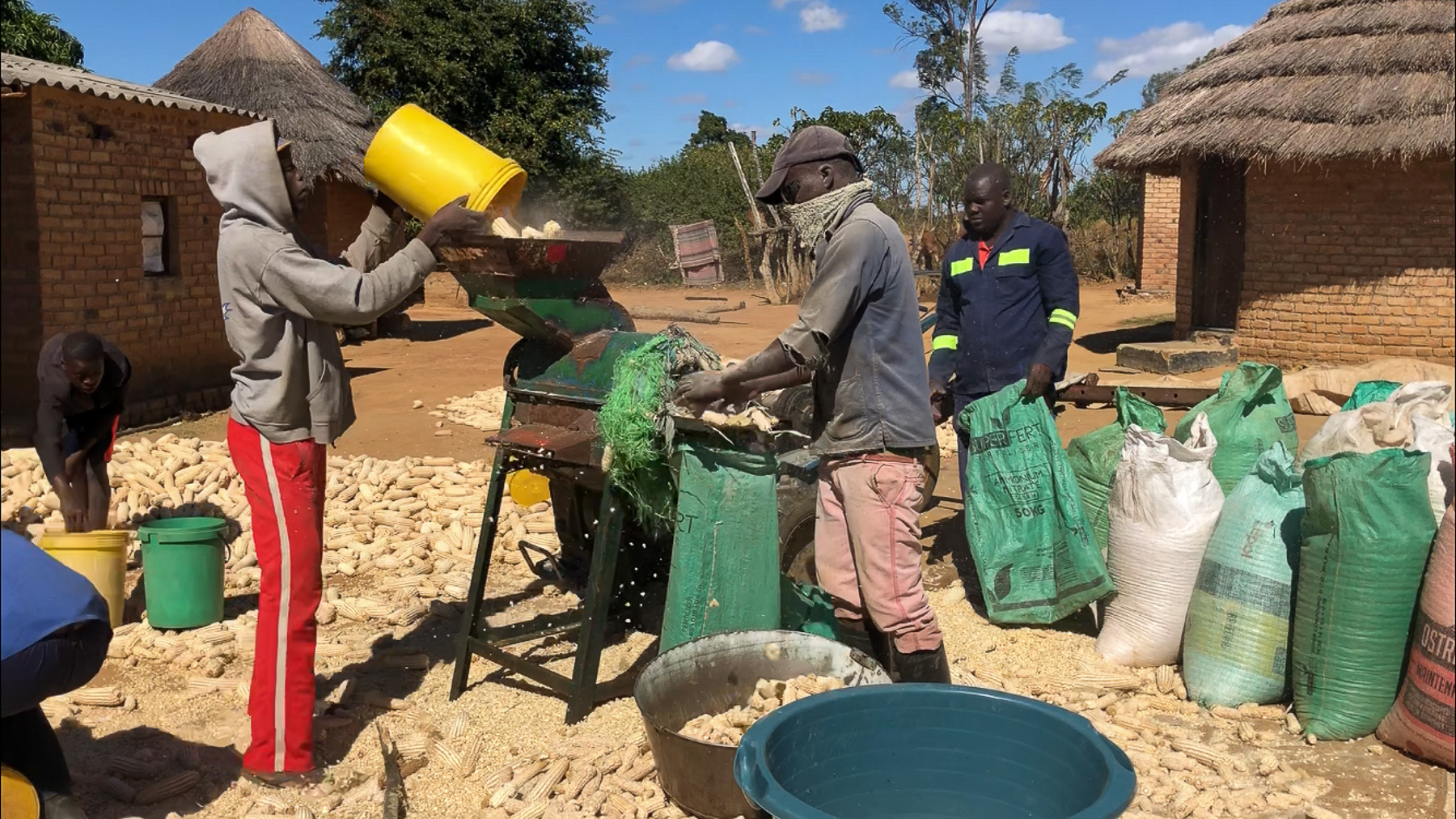
Mentoring and support are key to success
The young men operate like a well-oiled machine. Shepard Kawiz, 24, gathers dried maize cobs into a bucket and passes it to his brother Pinnot Karwizi, 26, who pours the maize into the sheller machine by feeding the hopper. The maize falls into the sheller’s barrel where high-speed rotation separates the grain from the cob. As bare shafts are propelled out one side, Masimba Mawire, 30, is there to catch and dispose of them. Meanwhile, Gift Chawara is making sure a bag is securely hooked to the machine to collect the maize grain.
Trials showed that when youth form a group and are provided guidance they are more inclined to succeed as service providers, explained CIMMYT agribusiness development specialist Dorcas Matangi.
“The group model works because they share the costs, the workload and they are more attractive to lenders when looking for investment capital,” she remarked.
Throughout the season, Mantangi works with local government extension workers and engineers from the University of Zimbabwe to mentor those starting out. They also organize meetings where service providers can gather to discuss challenges and opportunities.
“This is a good opportunity to iron out any problems with the machines, connect them with mechanics and spare part providers and we gain their feedback to improve the design of machinery,” she added.
Mechanization backs resilient farming systems
CIMMYT has provided a model to promote the use of agricultural mechanization among smallholder farmers through service providers, affirmed Misheck Chingozha, a mechanization officer with Zimbabwe’s Ministry of Agriculture.
Farm machinery helps farmers implement sustainable crop practices that benefit from greater farm power and precision,” he said. “This is in line with the government’s strategy to promote conservation agriculture – defined by minimal soil disturbance, crop residue retention and diversification through crop rotation and intercropping.”
CIMMYT promotes small-scale mechanization, such as two-wheel tractor-based technologies, including direct seeding planters that reduce labor and allow for improved resource allocation when implementing these practices, described CIMMYT’s Baudron.
Conservation agriculture is a sustainable intensification practice that seeks to produce more food, improve nutrition and livelihoods, and boost rural incomes without an increase in inputs – such as land and water – thus reducing environmental impacts.
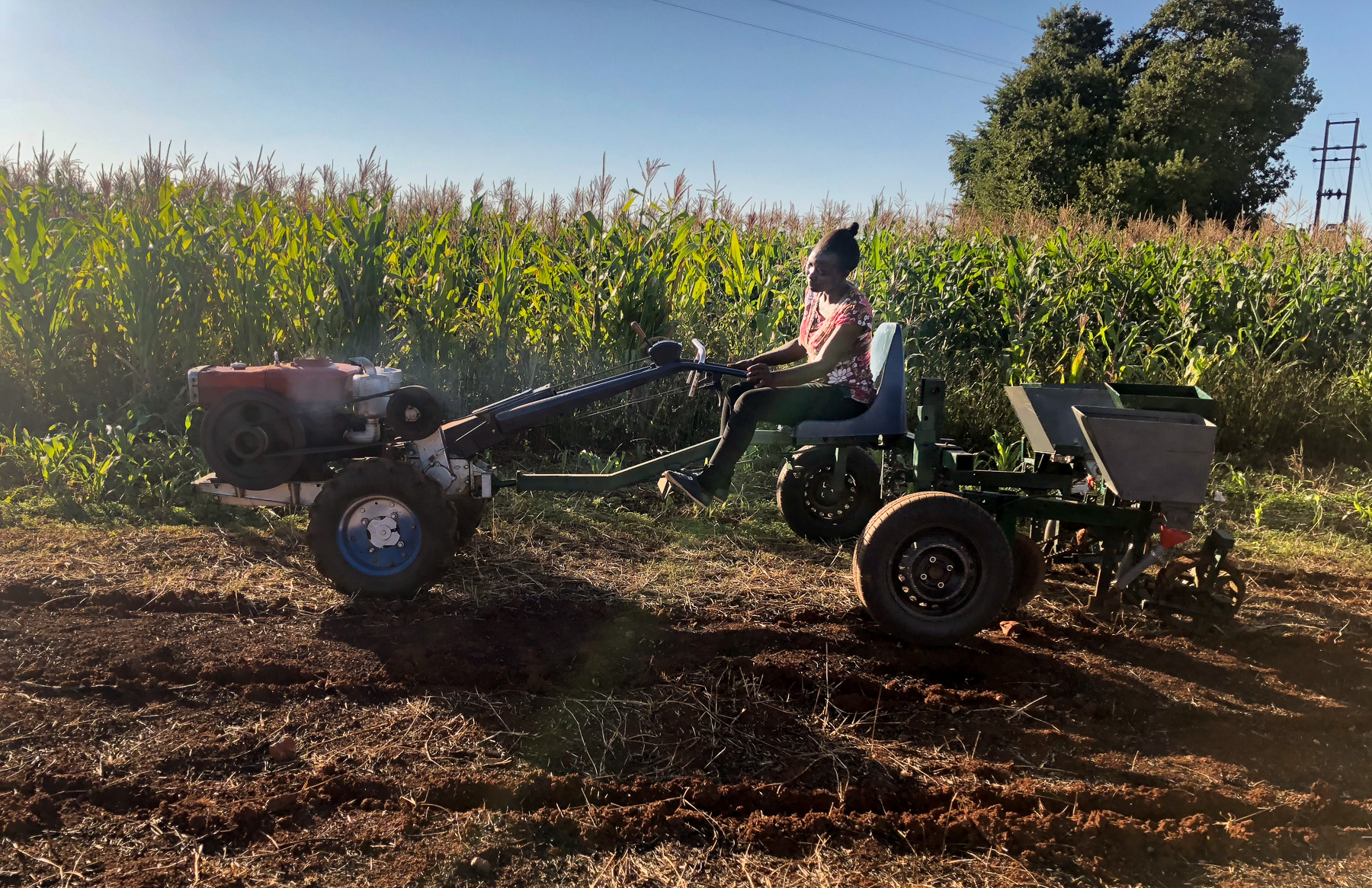
Students fuel next-generation machinery
As part of their degree, students at the University of Zimbabwe are working with CIMMYT to continuously improve the effectiveness and efficiency of agricultural machinery.
In a bid to improve the allocation of resources, agricultural engineering student Ronald Mhlanga, 24, worked on a prototype that uses sensors to monitor the amount of seed and fertilizer distributed by planters attached to two-wheel tractors. The device sends information to the driver if anything goes off course, helping farmers improve precision and save resources.
“Often planters will get clogged with mud blocking seeding. The sensors identify this and send a signal to the driver,” said Mhlanga. “This allows the driver to focus on driving and limits wasted resources.”
Learning from farmer feedback and working with agricultural engineers and the private sector, CIMMYT is building agricultural mechanization suited to the needs and conditions of sub-Saharan African farms, concluded Baudron.
 Capacity development
Capacity development 
